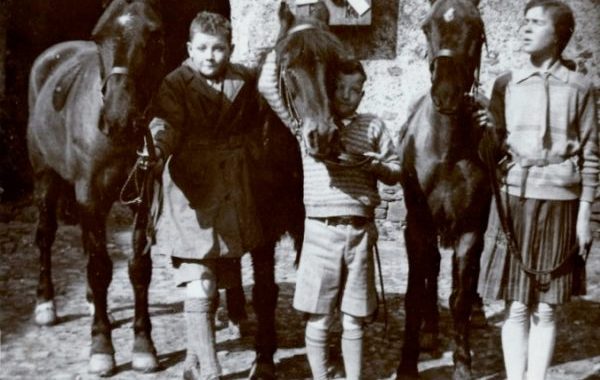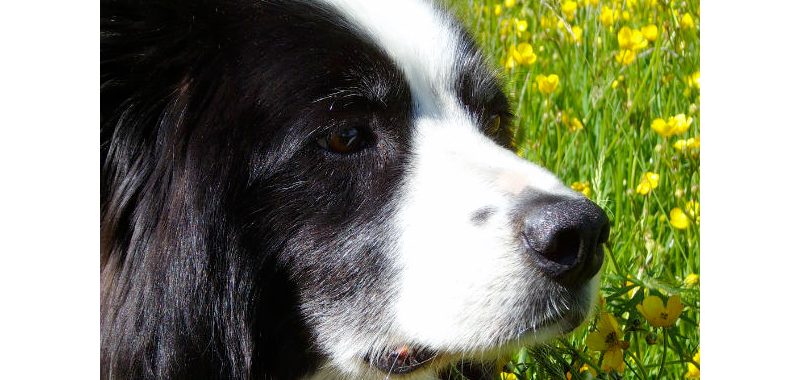I love my life here. It’s a pretty magical existence, living in a 300 year old country estate, surrounded by nature and animals, my girls at my side, entertaining interesting guests from all over the world. But, I do get homesick sometimes. I miss my family in Canada. Sometimes I wish I could just meet my father for a pint, tell him about my life. About the tiny Mexican woman who stayed with us last week, who’s job was risk assessment for NASA, or a cute story about one of the kids, but I am where I am and wouldn’t change it for the world. You can’t have everything.
It was during one of my recent bouts of homesickness that this story begins and it’s one that I couldn’t have made up if I tried. It was the day the world learned of David Bowie’s death. A sad one for myself and millions of others and I have no doubt that it effected some of them the same way it hit me. I got me thinking about mortality, mine and that of those close to me, slowly leading my mind across the Atlantic to Canada and my parents. If an extra-terrestrial rock star can be taken from us, none are safe.
When the sad news broke, I was in the kitchen with Khan, a 19 year old Berliner who had been staying with us for a few weeks. I suggested that we should record a song in Bowie’s honour and we began exchanging ideas about what kind of song we should make. One of the musical references he made, was to his “father’s Turkish rap crew”, a combination of words never uttered in my presence before. We went online and sure enough there was his father, rapping in Turkish. I tried for a moment to picture my father in Khan’s father’s crew, but because dad had wasted so many years being a judge, I was certain both his rapping skills and his command of the Turkish language would have been underdeveloped enough to prevente our fathers from busting rhymes together.
Then my phone rang. It was my father’s number and considering the mortal theme running through my mind, I got a bad feeling. I answered it and from the sound I was hearing, could only assume that his phone was in a tumble-dryer. This was followed silence, then heavy breathing.
“Dad, can you hear me?” No response, only distressed breathing.
“Hello…Can you hear me?” Then I heard distant voices, that I thought at first were echoes of my own, repeating,
“Can you hear me? Hello, can you hear me?”
A feeling crept over me that something terrible had happened and he had called me to say good-bye, losing consciousness before he got the words out. I was sure that I was listening to my father’s last breaths, the distant voices belonging to concerned bystanders trying to revive him. Then the line went dead.
Finished work for the day, Justice Flynn left his chambers and made his way to the parking garage. When he arrived at his car, he cursed under his breath at the idiot who had parked so close to his driver’s side that he couldn’t open his door. Weighing his options, he decided that finding the offending car’s owner would take far too long and that this was a situation that called for “thinking outside the box”, a skill he used daily.
The plan was simple. He would enter through the passenger’s door, lean across into the driver’s side, slowly ease out past the car blocking his door, then get out and walk around to the driver’s side. Except, when he had taken up his position, he couldn’t properly get a grip on the steering wheel, a constraint he corrected by opening the drivers door, giving him the few inches he needed.
He called his wife to tell her that he’d be home in time for dinner, hung up the phone and started the car. He put it in drive and stretched his left foot out to press down on the accelerator, quickly discovering that it didn’t posses the same subtlety that his right foot did, as the car shot forward. In a panic, he stomped for the brake, missing it and fully flattening the accelerator. The screeching tires propelled him forward, the sudden motion making him grip the steering wheel, turning it hard left, and into the wall in front of him. The impact threw him forward, a flailing limb engaging the cruise control and hitting the speed dial for his son’s phone number in one fell swoop, before launching him out of the open driver’s door. The vehicle continued forward, connecting with a pillar, which slammed the door shut. Doors shut and engine on, the doors automatically locked and the car continued on, an eighty thousand dollar pinball, in a parking garage themed pinball machine. Down the ramp it went, it’s course corrected by the walls it bounced off on it’s way through the security gate.
Dazed and confused, a nasty cut on his elbow but otherwise unharmed, Justice Flynn looked on in stunned silence as courthouse security guards surrounded his unstoppable driverless car, which continued to bounce from wall to pillar, like a short-circuiting robot. The surreal scene made even stranger by the fact that the guards were shouting at the car, asking if it could hear them.
“Can you hear me?”, a voice from inside the car asked them back.
To prove to himself that he hadn’t sustained a head injury in the fall, he reasoned that the bluetooth function must still have been enabled on his phone, which would explain the conversation taking place between his car and the guards. To test his theory, he reached inside his breast pocket, retrieved his phone and ended the call. To his relief, the voice stopped. Now, if only his car would do the same.









